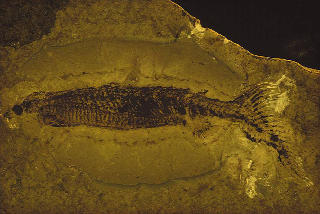EVIDENCE FOR ICE AGES
There are three main types of evidence for ice ages: geological, chemical, and paleontological.
Geological evidence for ice ages comes in various forms, including rock scouring and scratching, glacial moraines, drumlins, valley cutting, and the deposition of till or tillites and glacial erratics. Successive glaciations tend to distort and erase the geological evidence, making it difficult to interpret. Furthermore, this evidence was difficult to date exactly; early theories assumed that the glacials were short compared to the long interglacials. The advent of sediment and ice cores revealed the true situation: glacials are long, interglacials short. It took some time for the current theory to be worked out.

Glaciers scrape
and scour

GISP2 ice core
at 1837 meters depth with clearly visible annual layers
- sequences of sediments covering a long period of time, over a wide range of latitudes and which are easily correlated
- ancient organisms which survive for several million years without change and whose temperature preferences are easily diagnosed
- the finding of the relevant fossils, which requires a lot of luck.

The palaeontological site of
Despite the difficulties, analyses of ice core and ocean sediment cores have shown periods of glacials and interglacials over the past few million years. These also confirm the linkage between ice ages and continental crust phenomena such as glacial moraines, drumlins, and glacial erratics. Hence the continental crust phenomena are accepted as good evidence of earlier ice ages when they are founding layers created much earlier than the time range for which ice cores and ocean sediment cores are available.


